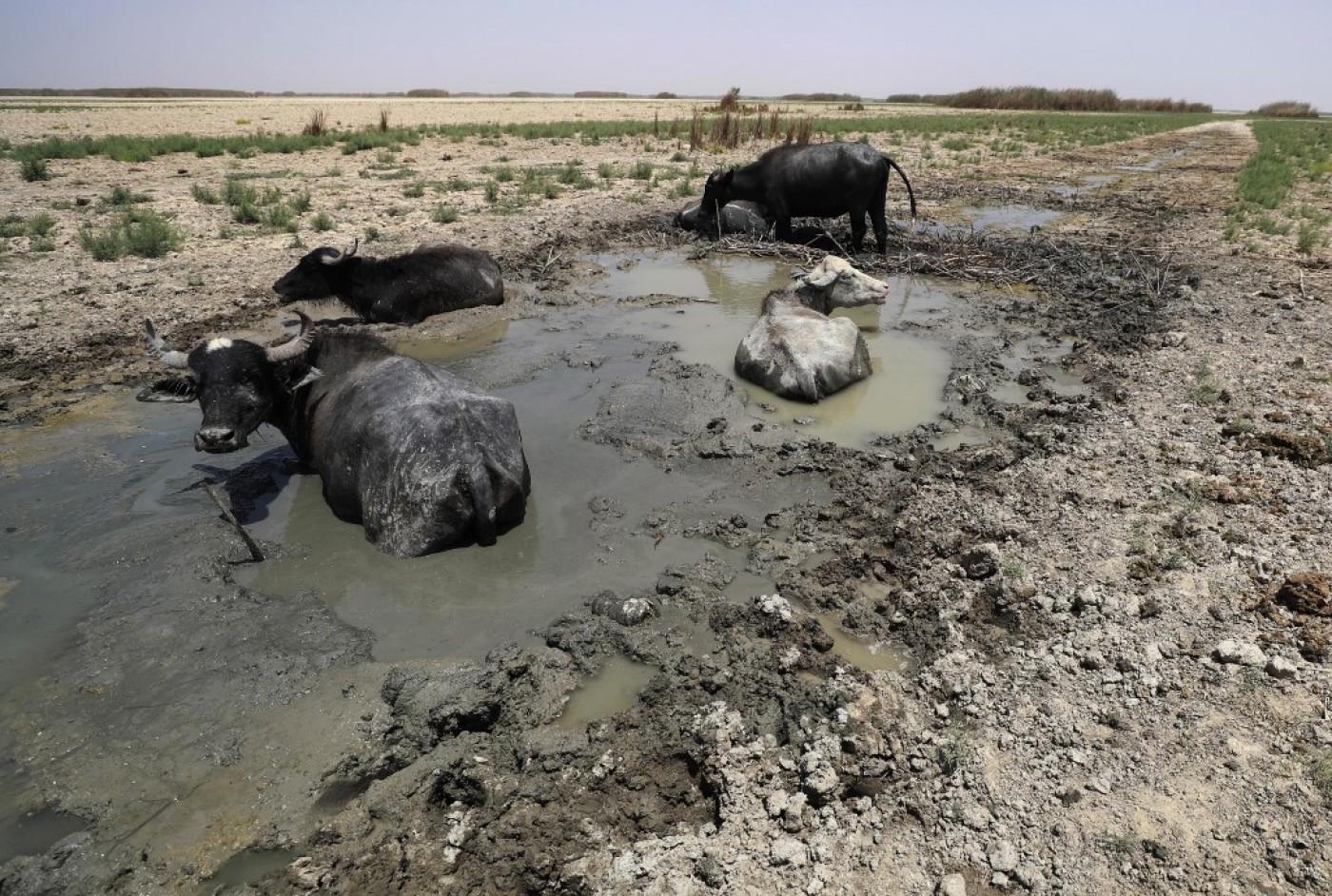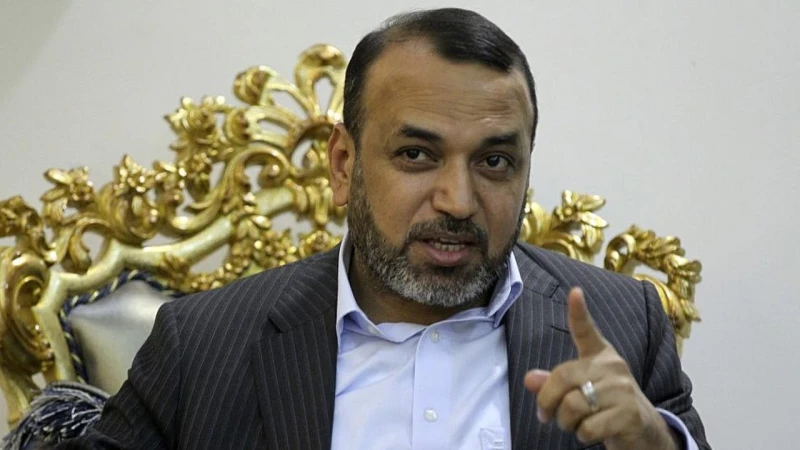Scenes of the corpses of water buffaloes amid cracked and barren land have replaced those of the herds once associated with southern Iraq.
Water scarcity and climate change have wreaked havoc on Mesopotamia. The UN now considers Iraq the fifth most vulnerable country in the world to climate change. The marshes constitute 17% of Iraq’s total surface, with their waters covering a mere 3%.
The responsibility for preserving the water buffalo in Iraq is shared between Iraq’s water, environment, and agriculture ministries. In southern Iraq, buffalo breeding is the third top source for livelihoods.
In July, the UN’s Food and Agriculture Organisation (FAO) in July issued a statement saying that it was “deeply concerned about the grave consequences of climate change and water scarcity on the marshes (Al Ahwar) and buffalo producers in the Southern Iraq”.
“The dire situation is having a devastating impact on the marshes system; buffalo producers, farmers, and fisheries forcing many of them leave their homes and migrate mainly to Salah Al-Din, Najaf, Karbala and Babil in the central part of Iraq and other cities, searching for drinking water, food, feed and employment,” it added in the July 10 press release.
Officials weigh in as Iraqi natural resources drain away
Iraqi Member of Parliament Muhammad al-Sayhoud told The New Region in a November 9 interview that the current government under Prime Minister Mohammed Shia al-Sudani “is one of the Iraqi governments [in recent years] that is most concerned with the issues of the environment and climate change.”
“It seeks,” he added, “through its international and regional partnerships, to solve this problem - especially since the crisis is global and not in Iraq alone” though “Iraq is among the countries most severely affected”.
Sayhoud noted that the regions of southern Iraq - the Diyala province as well as those of Babil and Baghdad – have been affected by water scarcity and that the Iraqi government continues to seek an agreement with upstream countries Iran and Turkey to enable the negative effects of environmental factors to be “shared”.
“The residents of southern Iraq,” he said, “suffer from a lack of livelihood sources after their areas witnessed an unprecedented number of buffalo deaths and a decline in fish resources. The government is responsible for taking care of this segment” of the population.
Iraqi Minister of Water Resources Aoun Diab had previously acknowledged that the country was going through “the most difficult stages of drought,” which prompted the government to limit agriculture.
Once a symbol of power, now a UNESCO site
There are only a few thousand water buffaloes left in southern Iraq now compared with millions in the past. The ancient Babylonians considered the species a symbol of power and immortalized it in their writings and arts. Buffaloes were domesticated in the Babylonian era for use in various agricultural activities including plowing and watering crops.
The Iraqi water buffalo was a cultural and civilizational symbol in the southern part of the country until recent years as well as a source of livelihood for about 5,000 years.
However, the water crisis and the cutting of the tributaries of the Tigris River coming from Iran led to a noticeable decline in natural resources. In recent years, Iraq has lost about 60% of the surface area previously covered by marshes.
This has been due to both water scarcity and the failure of successive Iraqi governments to reach solutions including ones concerning Iraq’s share of water coming from rivers originating in Turkey and Iran, despite the fact that the marshes were added to the UNESCO World Heritage List in 2016.
Initiatives to support buffalo farmers
On December 3, a press release from an EU-funded project implemented in cooperation with the Iraqi agriculture ministry and FAO announced an initiative that “mainly focuses on supporting the role of rural women, livelihood enhancement, and introducing practical applications for sustainable agriculture” in southern Iraq.
“The mission extended to green fodder fields in the Nahr Al-Saba village/Al Mdayna district, where officials observed the ongoing success of the forage program, which introduced, for the first time in southern Iraq, soil and climate conditions resistant crops. Smart irrigation techniques continue to contribute to exceptionally high production rates, resulting in a significant increase in milk production and improvements in farmers' incomes,” the press release continued.
The Iraqi agriculture ministry said in October 2022 that the number of buffalo had fallen to 318,000 while claiming that measures were being taken to prevent further deaths after hundreds died from issues related to a lack of water in the areas they normally graze.
Ali Al-Nashi, a researcher in environmental affairs, told The New Region in an interview in Nassiriyah on August 11 that, “The water crisis in Iraq has led to the death of hundreds of thousands of buffalo that live wherever water is available, and Iraq is perhaps one of the countries in the world where this animal lives the most.”
Nashi added that, “The past years have witnessed a decline in the number of buffalo, and this decline has destroyed the livelihoods of thousands of families depending on water buffaloes.”
He added that, “the vast marshes, with unique features in their shape and composition, have become similar to a barren desert unable to sustain life.”
“The government’s role in helping those affected people is negligible,” he noted, “and local and international organizations are also content with issuing statements and providing only basic assistance.”
The livestock department of the Iraqi agriculture ministry at one point announced a plan to adopt artificial insemination for water buffaloes to boost the number of animals. However, local sources told The New Region that this initiative did not serve its intended purpose.



 Facebook
Facebook
 LinkedIn
LinkedIn
 Telegram
Telegram
 X
X


